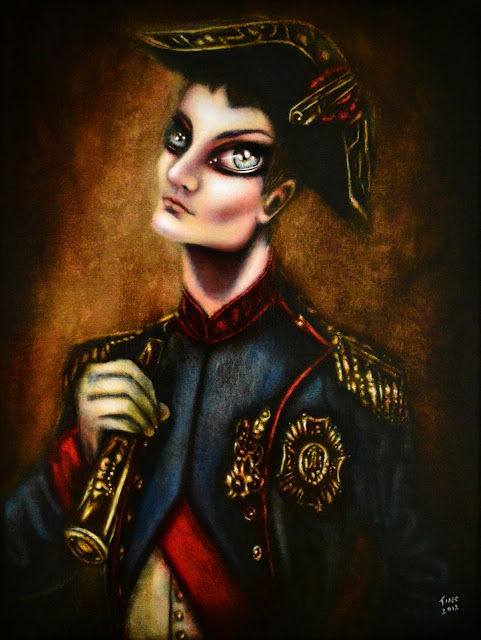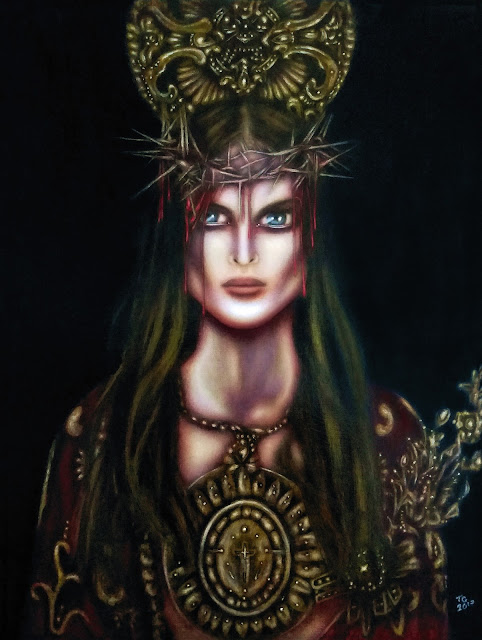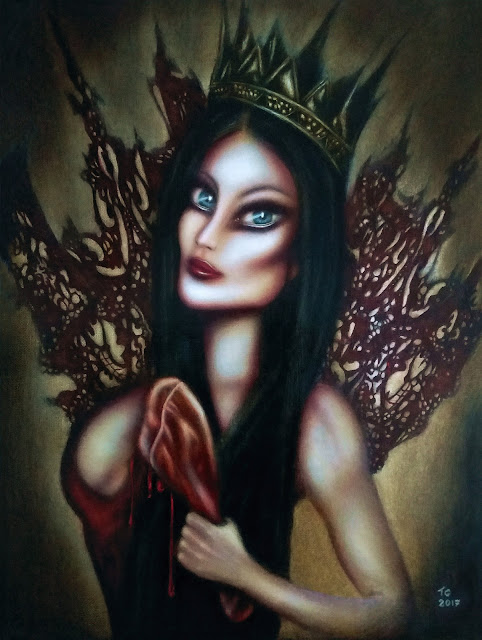Nefertiti, Queen of Egypt and one of the most famous female rulers in history, partially clad in an opulent blue and gold embroidered gown, characteristic crown, and crown at the center of a splendid palace decorated with symbols. This painting has a delicate brushwork and a jewel-like palette.
This portrayal of her in a pop surrealist manner captures her mesmerizing glance that has intrigued so many admires in the world, as well as her sharp facial feature that are still a reference in the cosmetic subregions book. She is almost surprised to see the viewer, this surprise effect can be related to the fact that she is leaned in front of a blue wall to frame her royal pose. This shows a contrast between her great power and the vulnerability in her expression.
Nefertiti known as The beautiful one has come forth was the 14th-century BC Royal Wife of the Pharaoh Akhenaten. He initiated a new monotheistic form of worship called Atenism dedicated to the Sun disc Aten. Little is known about Nefertiti.
She could have been an Egyptian royal by birth or a foreign princess. who became pharaoh after Tutankhamun. She may have been the co-regent of Egypt with Akhenaten. Nefertiti bore six daughters to Akhenaten. While it was once thought that Nefertiti disappeared in the twelfth year of Akhenaten's reign because of her death or because she took a new name, she was still alive in the sixteenth year of her husband's reign. Nefertiti may have become a pharaoh in her own right for a short time after her husband's death. www.tiagoazevedo.com








































